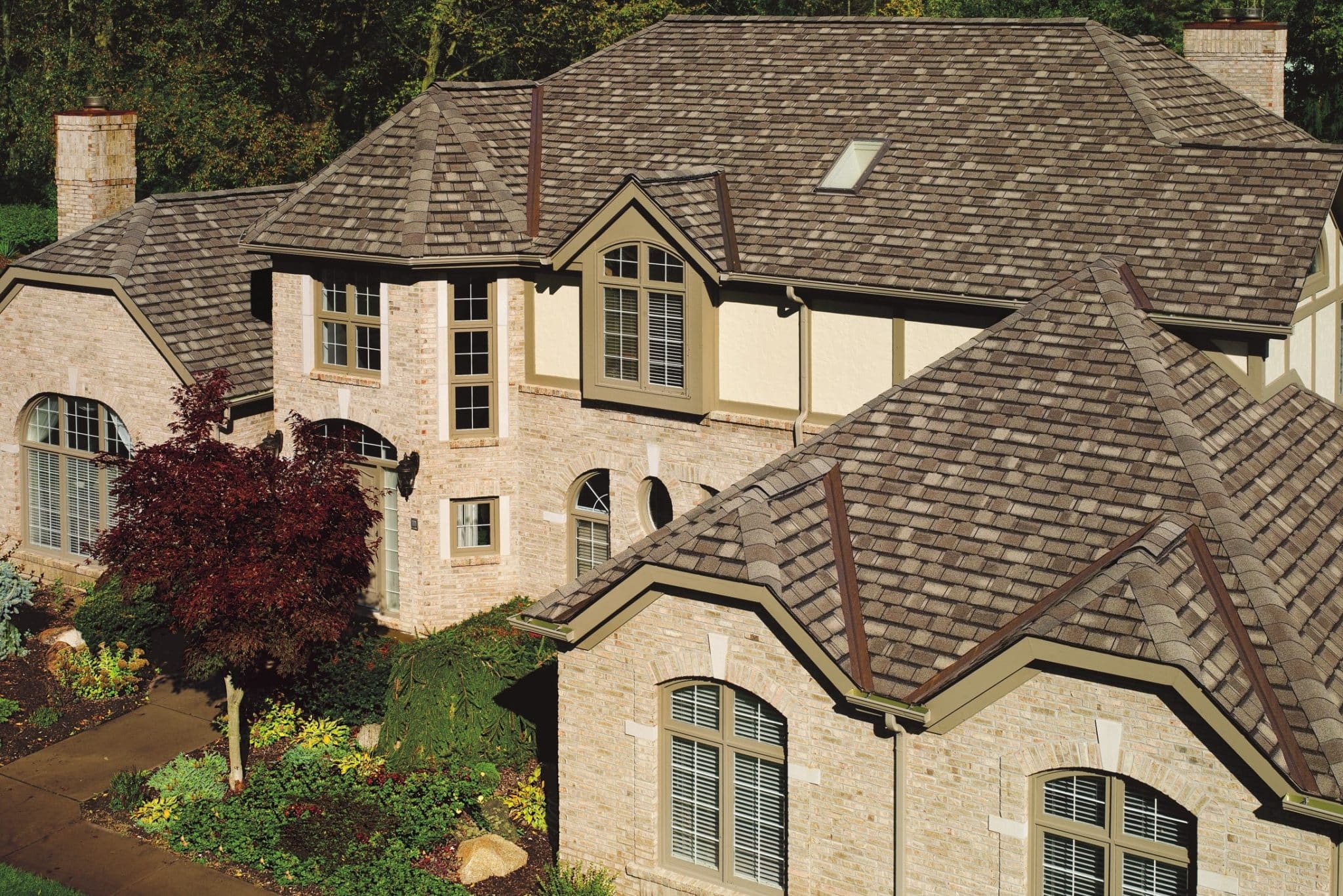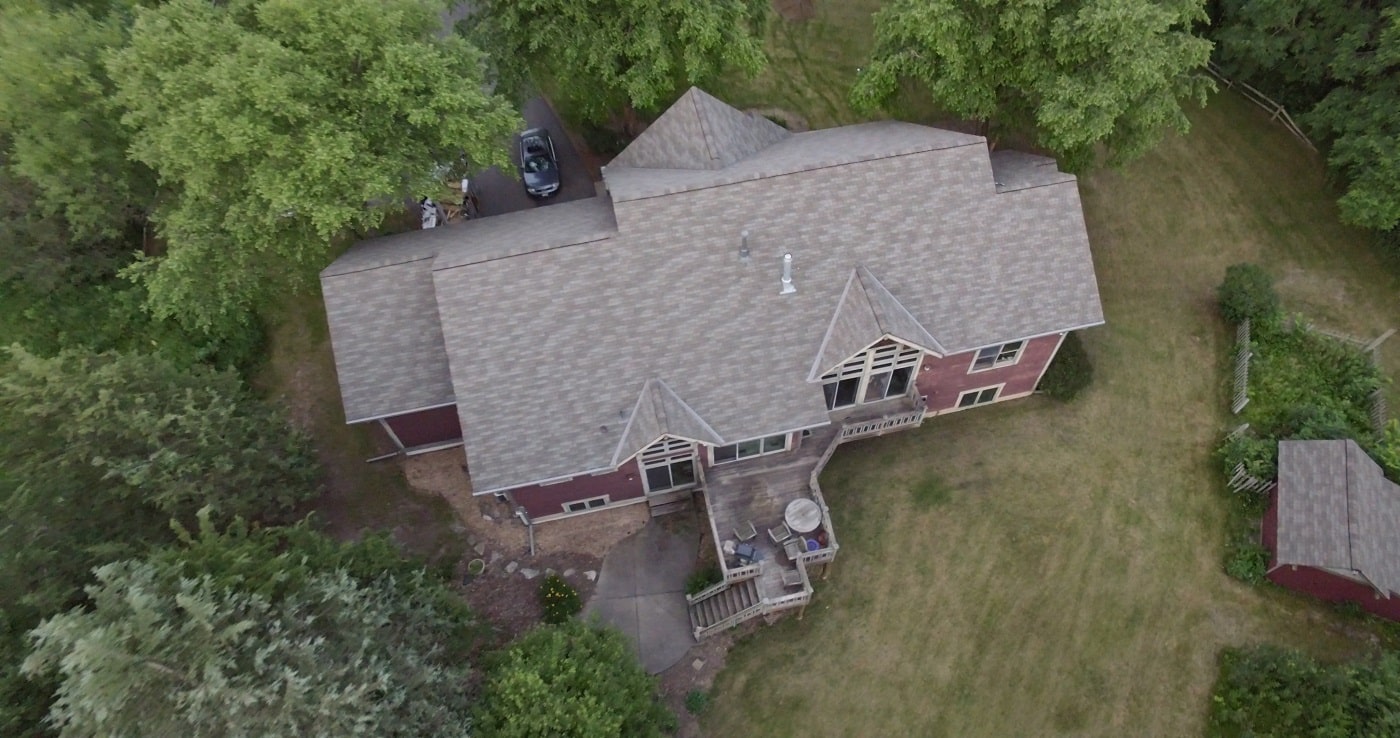Flashing-A Roof Leak Preventative
When it comes to replacing your roof, homeowners spend a lot of time selecting shingle style and color. There’s nothing wrong with this, especially when you consider that companies like GAF put out roofing systems that have non-prorated warranties that last 50 years. It’s also, if not equally more important, to understand the components being installed in conjunction with your shingles because they act as additional protectors for your home from issues such as water damage.
One of these protective components is called flashing. Likely, flashing is not something that is top of mind when it comes to re-roofing your home, but failure to pay ample attention to it can dramatically shorten the lifespan of your roof and lead to water damage in your home.

What Is Flashing?
Flashing is metal that aids to protect your roof from water intrusion where a roof meets a wall. The intention of flashing is to defer the flow of water away from the home, rather than allowing your roofing and underlayment to absorb it, which can cause water damage.
Types of Flashing
Kick-Out:
Its primary purpose is to protect your home’s structure, windows and siding. Additionally, it prevents water from going behind your siding where your roof meets a wall. This type of flashing is installed over the edge of your roof. Without it, the water that drains down your roof will come crashing down your roof and splash onto your windows & siding. As this process repeats, mold, rot and structural damage can occur.
Valley:
On a roof, a valley is an area where two adjoining sloped roof planes intersect on a roof creating a “V” shaped depression. Valleys can be common sources of roof leaking because they catch water speeding down two roof planes; they disperse more water off a roof than does any individual roof plane. Inadequate or improper installation of valley flashing can result in circumstances such as your roof caving in or your roof decking rotting. Valleys come in two varieties. They are: closed valley & open valley.
A closed valley is where the metal flashing is installed first and then the shingles are placed on top of it. An open valley is where the flashing is laid first, followed by the shingles. The tin is left exposed. Additionally, three rows of ice and water shield are placed in this area. Some homeowners feel that the closed valley is better because the metal is hidden from sight, therefore making the roof more aesthetically appealing. An argument can be made for the open valley because the valleys of your roof handle more water than any other part of your roof. Over time, this can cause the granules on your shingles to erode off. Open valleys add an additional protectant so that this process is slowed.

Step:
Step flashing gets its name because it is comprised of several pieces of flashing that “step up” the roof with each progression of shingles and when the process is completed, the flashing looks like steps going up a wall. Step flashing is important because it is a protectant against leaking where a roof & wall come together. Improper step flashing can also lead to leaking where a chimney and wall meet.
Vent Pipe:
It’s not uncommon to see a vent pipe sticking out from numerous places along your roofline. Vent pipes can be for bathroom vents, sewer vents, hot water heaters, furnaces, etc. Over time, due to nature’s elements, the seal between the pipe and roof begins to erode. Installing vent pipe flashing defends against water damage to your home.
Chimney:
Like its name states, chimney flashing is positioned around a chimney for the purpose of sealing it off against water. One type of chimney flashing is called “chimney cricket”. This piece of metal is installed on the back side of the chimney with the intention of diverting water away from it, as chimneys are an area that can easily leak. If you notice stains on the walls that are in close proximity to your chimney, it’s quite likely that your chimney flashing has been compromised. Prompt attention should be paid to this matter to avoid further damage, including mold growth.

Skylight:
When a skylight is installed, a hole is cut in your roof to accommodate it. Skylights must have flashing installed around them. Without it, leaking can occur, damaging the interior of your home. Many skylight companies offer flashing kits that are specifically designed for their product.
Drip Edge:
Drip edge flashing can be installed on your roof’s gable edges and eaves. It will preserve the fascia board from windblown rain. Additionally, it assists in bolstering roof shingles from sagging into your gutters or being broken should a tree branch fall on it. Drip edge flashing also serves as a preventative for shingles being pulled off the roof during heavy winds.
Explore The Components of A GAF Asphalt Roof:
Sidewall:
This type of flashing should be installed where a section of roofing meets a vertical wall. This will add an additional level of protection to prevent water from leaking behind your walls, siding, etc. This can lead to rot, mold, etc. which can end up causing a homeowner thousands of dollars.
For more information about our roof repair and replacement services, contact us today. Our team of roofing professionals is ready to serve you.
